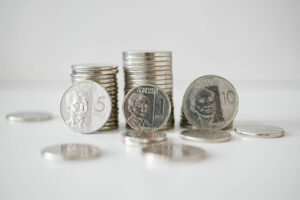Peso may be range-bound as investors stay cautious amid Middle East conflict
THE PESO could move sideways against the dollar this week as investors stay cautious amid the ongoing conflict in the Middle East ahead of the US presidential elections. The local unit closed at P57.511 per dollar on Friday, strengthening by 28.9 centavos from its P57.80 finish on Thursday, Bankers Association of the Philippines data showed. […]

THE PESO could move sideways against the dollar this week as investors stay cautious amid the ongoing conflict in the Middle East ahead of the US presidential elections.
The local unit closed at P57.511 per dollar on Friday, strengthening by 28.9 centavos from its P57.80 finish on Thursday, Bankers Association of the Philippines data showed.
However, week on week, the peso declined by 30.6 centavos from its P57.205 finish on Oct. 11.
The peso rebounded against the dollar on Friday due to data showing slower-than-expected economic growth in China and after the Chinese government disclosed more details on its stimulus measures, a trader said by phone.
China’s economy grew at the slowest pace since early 2023 in the third quarter, and though consumption and factory output figures beat forecasts last month a tumbling property sector remains a major challenge for Beijing as it races to revitalize growth, Reuters reported.
Authorities have sharply ramped up policy stimulus since late September, but markets are waiting for more details on the size of the package and a clearer road map to put the economy back on a solid longer-term footing.
The world’s second-largest economy grew 4.6% in July-September, official data showed, a touch above a 4.5% forecast in a Reuters poll but below the 4.7% pace in the second quarter.
Officials addressing a post-data press conference on Friday expressed confidence the economy can achieve the government’s full year growth target of around 5%, underpinned by further policy support and another cut to the amount banks must hold in reserve.
On a quarterly basis, the economy expanded 0.9% in the third quarter, compared with a revised 0.5% growth in April-June, and below forecast of 1.%.
China has been grappling with deflationary pressures since early last year, and some economists see those strains deepening.
Policy makers, who have traditionally leaned on infrastructure and manufacturing investment to drive growth, have pledged to shift focus towards stimulating consumption.
The central bank in late September announced the most aggressive monetary support measures since the COVID-19 pandemic to support the property and stock markets.
The peso was also supported by the US calling for a ceasefire after the death of one of the Hamas leaders, the trader added.
Easing tensions in the Middle East also led to lower global crude prices, which helped prop up the peso, Rizal Commercial Banking Corp. Chief Economist Michael L. Ricafort said in a Viber message.
For this week, the trader said the peso could trade depending on developments in the Middle East.
An Israeli airstrike that hit several houses and a multi-storey residential building in Beit Lahiya town in northern Gaza on Saturday caused dozens of casualties, doctors and officials said, with rescue operations still underway, Reuters reported.
The Hamas media office said at least 73 people had been killed in the strike. No official casualty figures were immediately available from the health ministry however Medway Abbas, a senior health ministry official, said the figures were accurate.
However, the local unit may weaken if the possibility of Donald J. Trump winning the US presidential increases, the trader added.
Opinion polls indicate a likely close match between Mr. Trump and Vice-President Kamala Harris in the vote on Nov. 5. However, the odds have diverged on Polymarket, with Mr. Trump pulling strongly ahead at a 60% chance of winning versus Ms. Harris on 40%, Reuters reported.
The peso’s movement could also be affected by the US Federal Reserve’s Beige Book report to be released on Wednesday (Oct. 23), Mr. Ricafort said.
The trader sees the peso moving between P57.40 and P57.70 per dollar this week, while Mr. Ricafort expects it to range from P57.20 to P57.60. — A.M.C. Sy with Reuters












